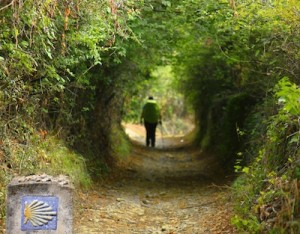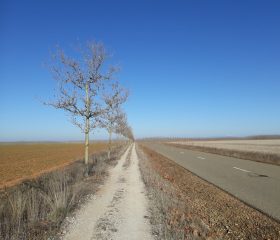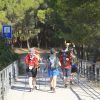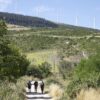This is undoubtedly the biggest factor in determining which Camino is right for you. If you work full time and can only get a couple of weeks off you’re not going to try and tackle the full 800km Camino Frances. But if you’re retired and cashed up, well the world is your oyster.
THE FULL CAMINO FRANCES
If you plan on walking the full Camino, it’s recommended that you give yourself up to six weeks, possibly longer. The Camino Frances is divided loosley into 33 stages but this includes several 30+ km days. Many people find this too strenuous and unless you’re a seasoned walker we don’t recommend sticking to these stages but rather breaking it up into shorter days.
Furthermore, there is obviously no rest days included in this scenario. It’s not just highly recommended, it’s almost imperative, that you have some rest days along the way. This not only gives your body a chance to recuperate, it also gives you a chance to explore some of the wonderful larger towns along the way like Pamplona, Burgos and Leon.
COMPOSTELA
If you are tight on time, you need to consider what’s important to you. If you wish to obtain a Compostela, or certificate of completion, you will need to walk at least the last 100km, or cycle the last 200km. While there are some smaller Caminos where it’s possible to do this, by far the most popular and probably easiest to negotiate is from Sarria in Galicia. On the Portuguese Camino, the last 100km would start from Baiona which is actually in Spain but technically on the Portuguese Camino.

FROM SARRIA
To walk from Sarria, like any stage, there are pros and cons. Being the shortest distance to get a Compostela, the numbers of people walking this section is exponentially higher than any other section. While this may be a bit of culture shock to those who have already walked 700km with relatively few fellow pilgrims, this section gives you an immersive experience of the Camino with a veritable melting pot of walkers from around the world.
ALTERNATIVE SHORTER WALKS
If you’ve got limited time and don’t want to walk the last 100km from Sarria, your options become limited. While it’s technically possible to walk between any two towns you wish, the problem of transport becomes an issue. There is little public transport between the smaller towns so realistically most people opt to walk between the major towns.
To get a better idea of what each of the sections has to offer you can look at the stages of the Camino. Some of the more popular sections between major towns are St Jean Pied de Port (or Roncesvalles) to Logrono, Leon to Sarria and Port to Baiona in Portugal.
PHYSICAL LIMITATIONS
A big factor to consider when deciding which section to walk is your physical capabilities. If you struggle to walk 20km a day you don’t want to attempt a section that requires you to walk 25-30km a day to complete in your time frame. It’s tempting to do this to try and pack in as much as you can but if you have to finish after a few days because of physical ailments you’re defeating the purpose.
Similarly, choosing the right section to wrong section for your physical capabilities could result in a premature end to your walk. The first day of the Camino Frances, for example, is one of the toughest of the whole walk with a 25km day mostly straight up. If you struggle with hills it might be best to look at alternatives for this.
OTHER POSSIBILITIES
If you have limited time and want to experience as much of the Camino as possible, you could look at doing a highlights version that takes in the start through the Pyrenees, trains to Burgos, Leon and Sarria then the last 100km from there.
Alternatively, a popular way to walk the full Camino is in stages. You might walk St Jean to Logrono or Burgos one year, across the meseta from Burgos to leon another year and from Leon to Sarria or Santiago another, depending on how long you have for each stage.
Whichever version you choose, remember that there’s no right or wrong way to walk it. Just know your time limitations and choose what is best for you.









